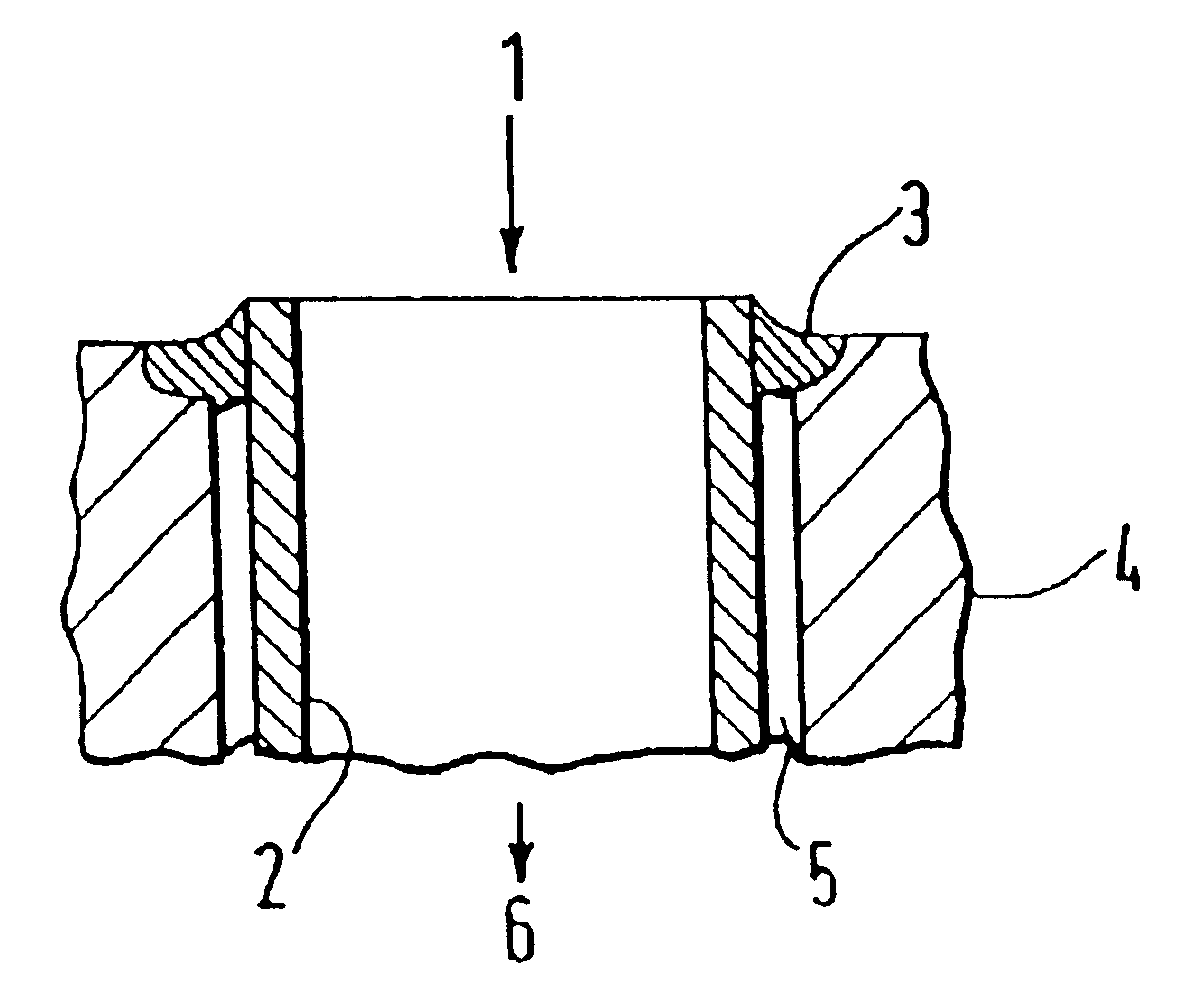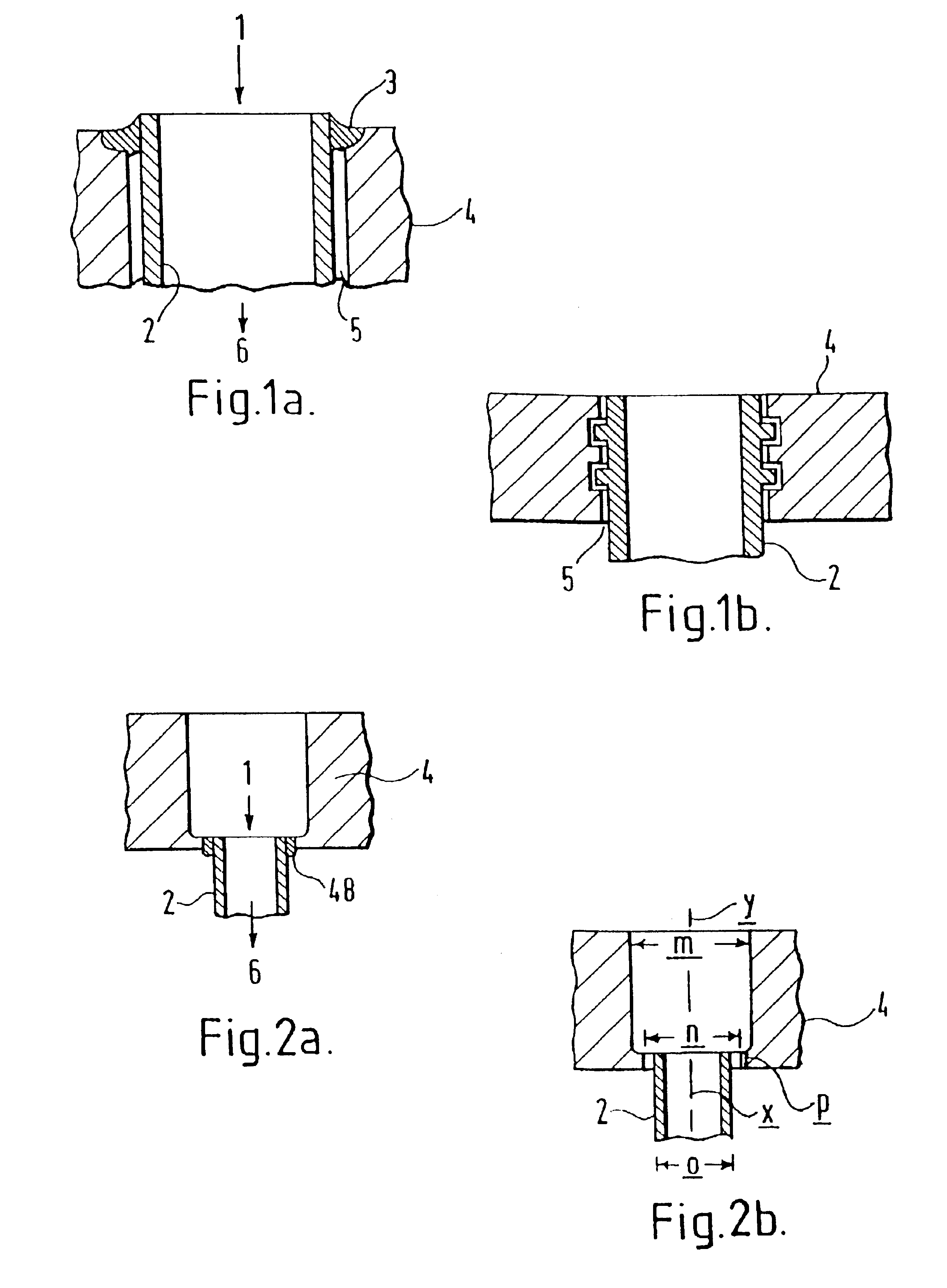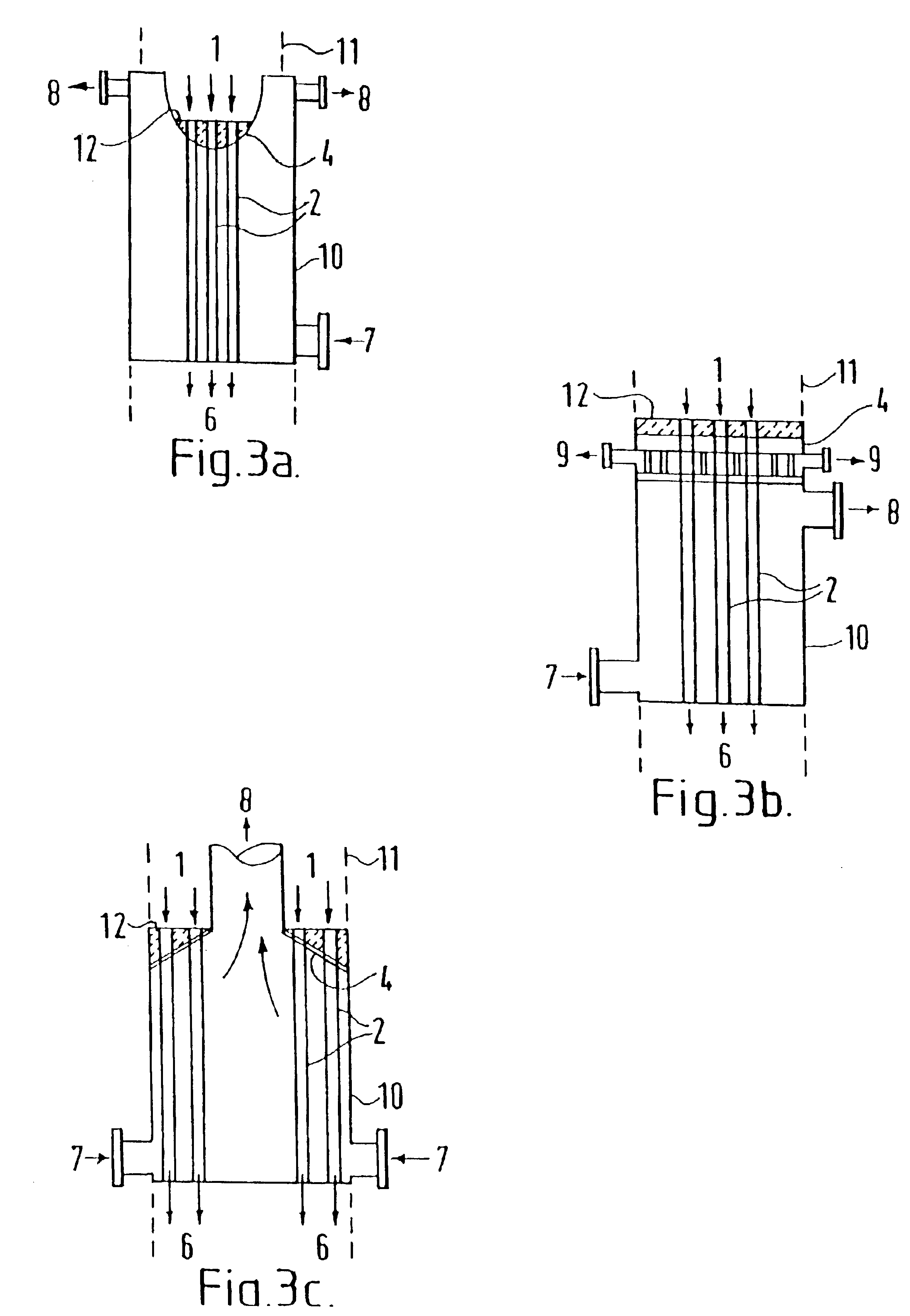High performance heat exchangers
a heat exchanger and high-performance technology, applied in the field of high-performance heat exchangers, can solve the problems of heat exchanger failure, the weld area of the heat exchange tube, and the severe conditions of the exchange tube and the closest weld of the tube-to-tubesheet to the reaction zone, so as to prolong the service life of the heat exchanger in the shell and the tube hydrogen cyanide reactor
- Summary
- Abstract
- Description
- Claims
- Application Information
AI Technical Summary
Benefits of technology
Problems solved by technology
Method used
Image
Examples
example 1
[0095]A hydrogen cyanide reactor was constructed with a shell and tube heat exchanger. The entry tubesheet and heat exchange tubes of the heat exchanger were prepared from a nickel-chromium alloy (INCONEL 600). The entry end of the exchange tubes was flush with the upper surface of the entry tubesheet or the tube ends extended slightly beyond the upper surface of the entry tubesheet. The exchange tubes were welded to the upper surface of the entry tubesheet. A mixture of silicon nitride ferrules and nickel-chromium alloy ferrules (INCONEL 600) were placed in nickel-chromium alloy (INCONEL 600) ferrule sleeves and the ferrules were then inserted in the entry end of the exchange tubes. After approximately 4 months (about 2700 hours) of operation, with 15 operating cycles, that is thermal shocks, and several high temperature (>1200° C.) operating periods, one silicon nitride and one nickel-chromium alloy ferrule were removed and inspected for wear. Each operating cycle consisted of hea...
example 2
[0099]The hydrogen cyanide reactor of Example 1 was operated for an additional 5 months. Again one silicon nitride and one adjacent nickel-chromium alloy ferrule were removed from the reactor and evaluated.
[0100]The nickel-chromium ferrule was difficult to remove from the exchange tube and it showed appreciable length loss, approximately 1 inch (2.54 cm) from the original length. There were also large amounts of carbon / nitrogen deposits on the surface of this ferrule. The ferrule was physically trapped within the sleeve. This ferrule had also swelled from absorbing carbon / nitrogen, thus constricting the inner diameter of the ferrule. Erosion patterns (wall thinning) were also visible on the interior of the ferrule.
[0101]The silicon nitride ferrule was easily removed from the exchange tube and showed no length loss. Some corrosion deposits, likely metal cyanide deposits, were noted on the outside of the ferrule. A dark carbon deposit was noted on the outside exit portion of the ferru...
example 3
[0103]The ferrules from Examples 1 and 2 were analyzed for weight loss and volume change. These results are reported in the Table below. The percentages reported were estimated by comparing the weight and volume of the ferrules from Examples 1 and 2 with that of a corresponding new ferrule.
[0104]
Months ofWeightVolumeFerruleOperationChange (%)Change (%)Silicon Nitride42094-50Nickel-chromium alloy99-109-10
[0105]Thus it can be seen that the silicon nitride ferrules of the present invention are very effective at protecting heat exchange tubes for long periods of time without any significant change in the dimensions of the ferrule.
PUM
| Property | Measurement | Unit |
|---|---|---|
| Temperature | aaaaa | aaaaa |
| Angle | aaaaa | aaaaa |
| Angle | aaaaa | aaaaa |
Abstract
Description
Claims
Application Information
 Login to View More
Login to View More - R&D
- Intellectual Property
- Life Sciences
- Materials
- Tech Scout
- Unparalleled Data Quality
- Higher Quality Content
- 60% Fewer Hallucinations
Browse by: Latest US Patents, China's latest patents, Technical Efficacy Thesaurus, Application Domain, Technology Topic, Popular Technical Reports.
© 2025 PatSnap. All rights reserved.Legal|Privacy policy|Modern Slavery Act Transparency Statement|Sitemap|About US| Contact US: help@patsnap.com



